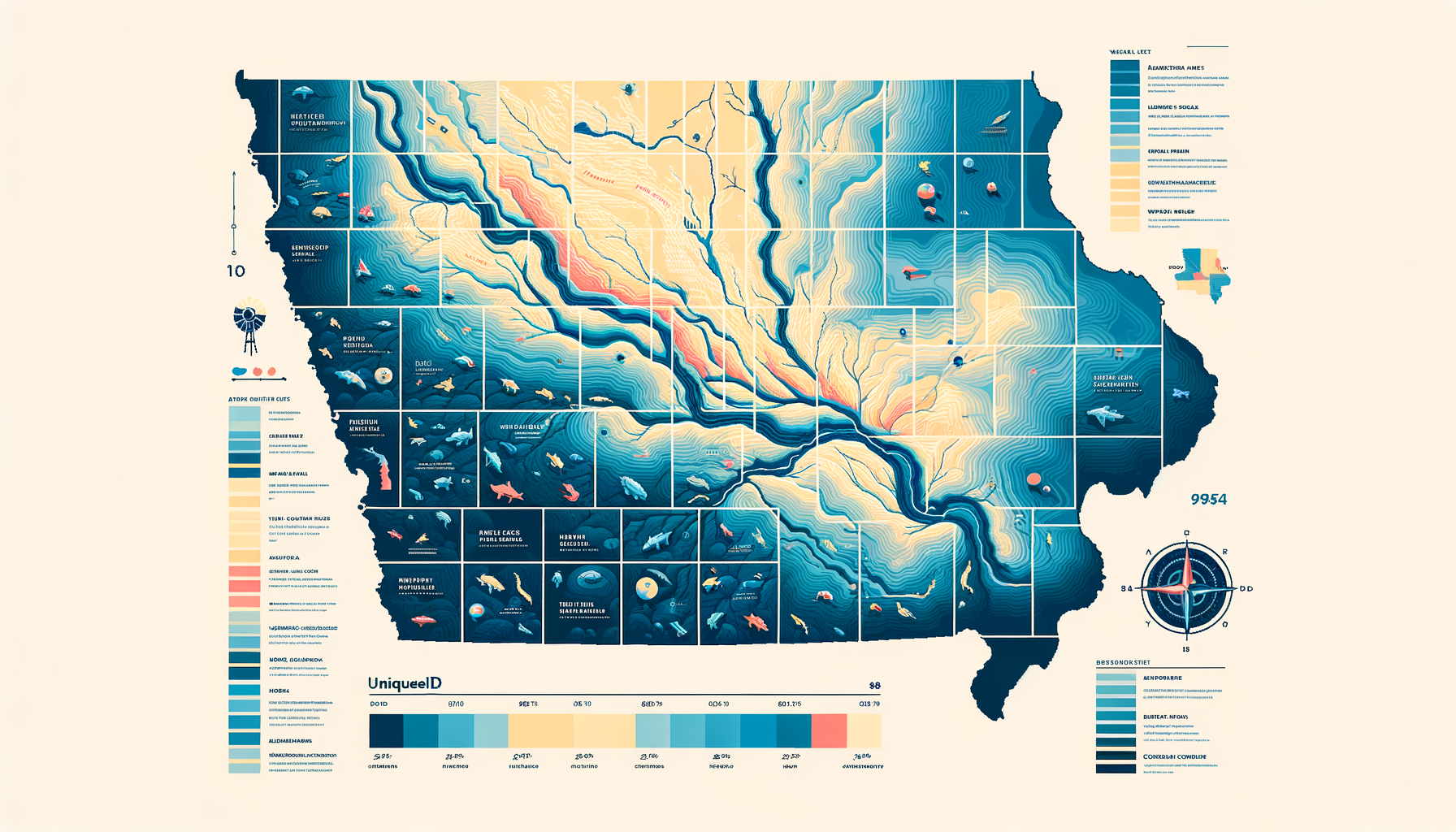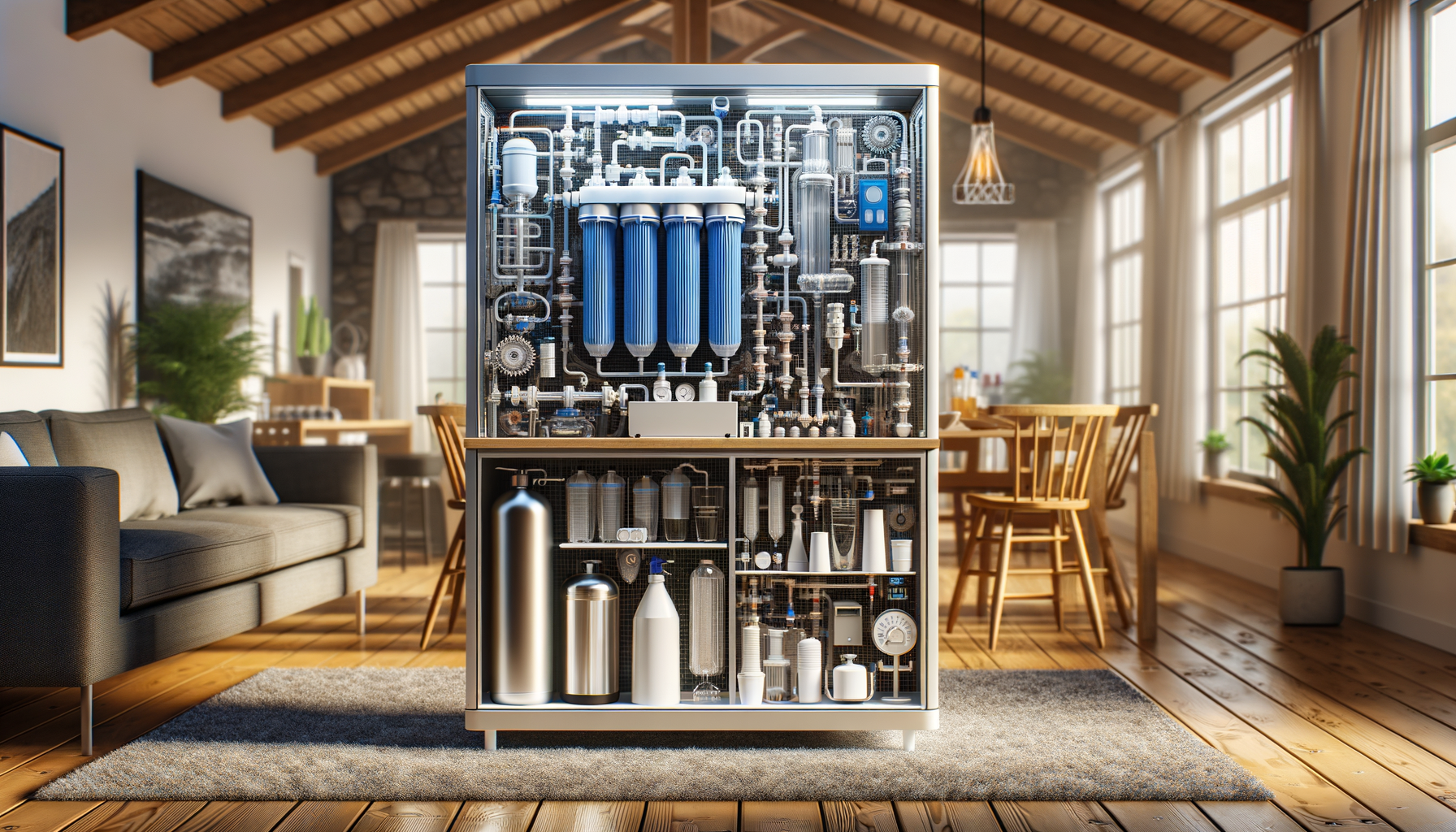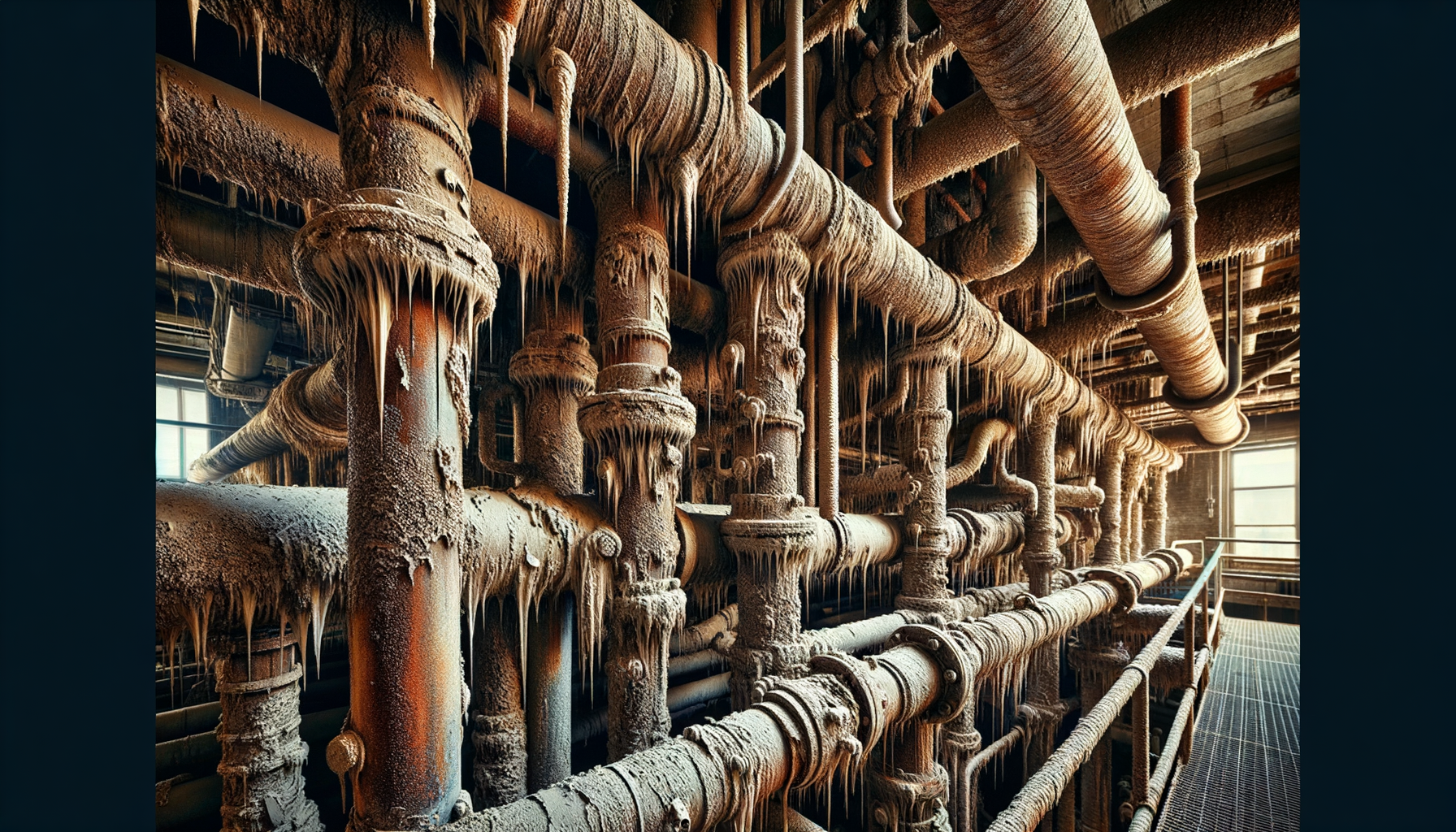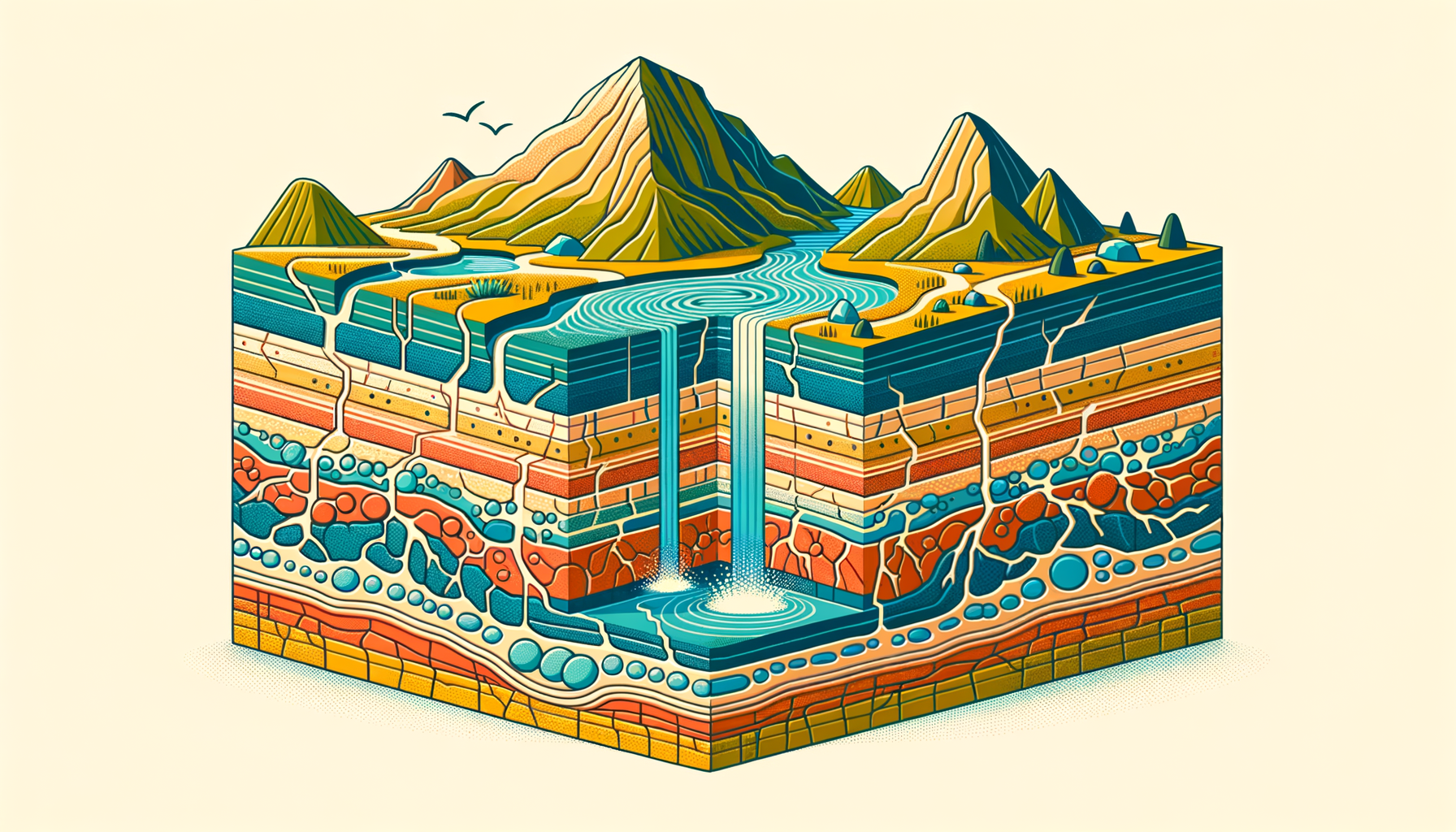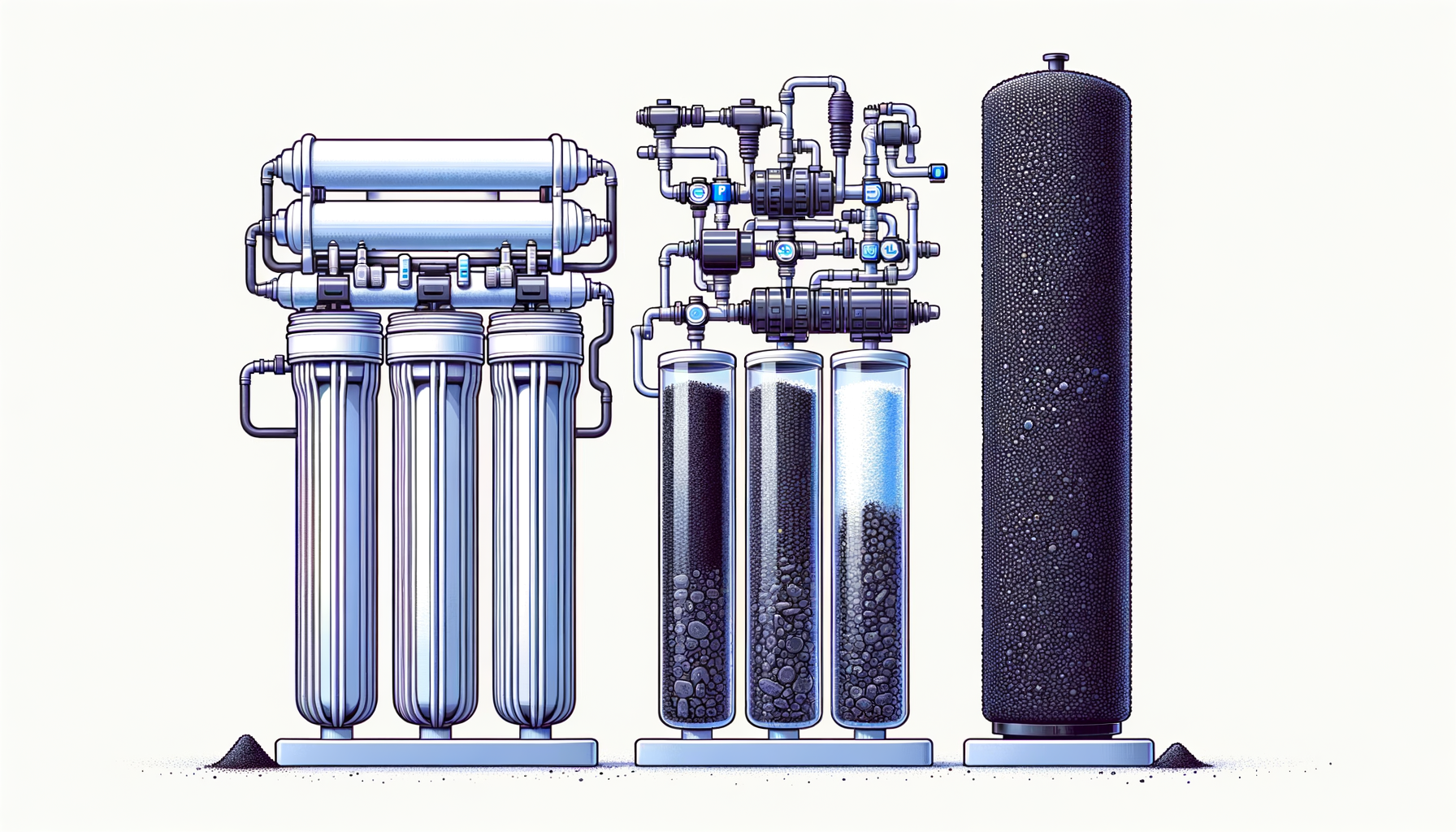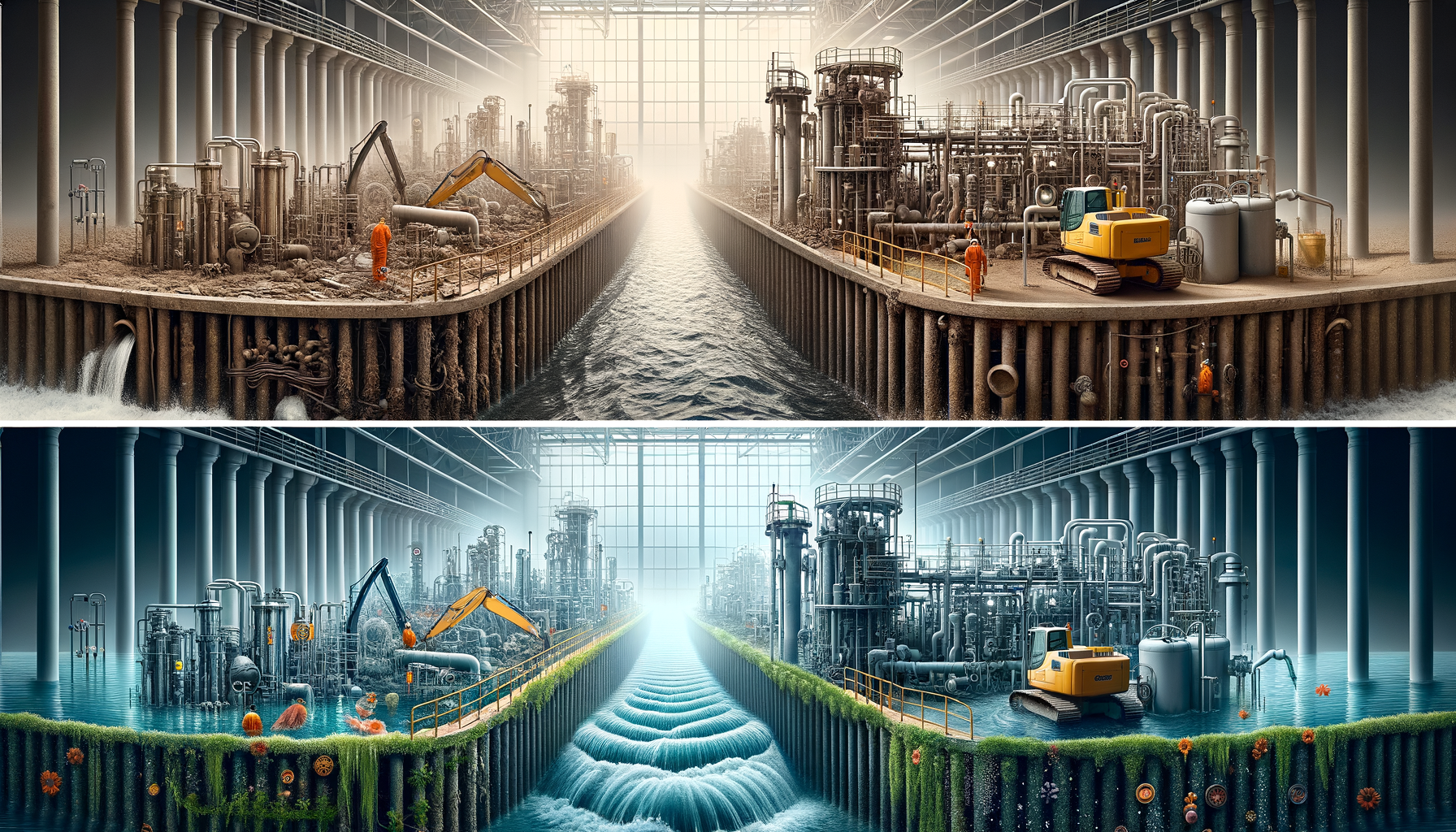Comprehensive Guide to Water Quality in Iowa: Contaminants, Issues, and Water Filtration Solutions
by Ryan Moreau / updated March 5th, 2025
Iowa is known for its vast agricultural landscapes and rich water resources—from the mighty Mississippi and Missouri Rivers to the numerous lakes and aquifers that supply water to its communities. However, this abundance comes with significant water quality challenges due to intensive farming practices, industrial activities, and natural geological factors. In this comprehensive guide, we explore the common contaminants in Iowa’s water, regional water quality challenges, and effective filtration solutions. Start by using our Water Quality Tool to get a customized analysis of your local water conditions.
Overview of Iowa’s Water Sources
Iowa’s water supply is crucial to its agricultural dominance and the well-being of its residents. Key sources include:
- Major Rivers: The Mississippi River to the east and the Missouri River to the west serve as significant water sources for irrigation, transportation, and municipal use.
- Inland Rivers and Streams: Rivers like the Des Moines, Cedar, and Iowa Rivers are essential for local ecosystems, recreation, and as water supplies for nearby communities.
- Groundwater Aquifers: The Jordan Aquifer and other groundwater sources provide drinking water to a large portion of the state’s population, both in urban and rural areas.
- Private Wells: Many rural residents rely on private wells tapping into shallow aquifers, which can be particularly susceptible to surface contamination.
Maintaining water quality across these varied sources requires ongoing monitoring, responsible agricultural practices, and effective water treatment solutions.
Common Water Quality Contaminants in Iowa
Iowa’s extensive agricultural activities and industrial sectors contribute to a range of water quality issues. To better understand what might affect your area, start with our Water Quality Tool and then review these common issues:
1. Nitrates
Nitrate contamination is one of the most pressing water quality concerns in Iowa. Excessive use of nitrogen-based fertilizers leads to elevated nitrate levels in both surface water and groundwater. High nitrate levels are particularly dangerous for infants, causing methemoglobinemia or “blue baby syndrome,” which affects the blood’s ability to carry oxygen.
Water Filtration Options for Nitrates: Reverse Osmosis Water Filters are highly effective at removing nitrates from drinking water.
2. Bacteria and Microbial Contaminants
Private wells in rural Iowa are especially susceptible to contamination by bacteria such as E. coli and coliform bacteria, often stemming from agricultural runoff and failing septic systems. Consuming water contaminated with these pathogens can lead to serious gastrointestinal illnesses.
Water Filtration Options for Microbial Contaminants: Combining a reverse osmosis system with UV disinfection can effectively neutralize bacteria and viruses in your water supply.
3. Pesticides and Herbicides
The widespread use of pesticides and herbicides like atrazine and glyphosate in agriculture has led to their presence in Iowa’s water sources. Long-term exposure to these chemicals can cause endocrine disruption and increase the risk of cancer.
Water Filtration Options for Pesticides and Herbicides: Activated Carbon Filters and Reverse Osmosis Systems are effective in reducing these contaminants.
4. Arsenic
Arsenic naturally occurs in some of Iowa’s groundwater, particularly in western regions. Prolonged exposure can lead to cardiovascular issues and various forms of cancer.
Water Filtration Options for Arsenic: Reverse Osmosis Systems are recommended to remove arsenic from drinking water.
5. Lead and Copper
Aging infrastructure and the use of lead pipes or solder in older homes can lead to lead and copper contamination. These heavy metals are harmful, especially to children, affecting neurological development and causing other health problems.
Water Filtration Options for Lead and Copper: Activated Carbon Filters and Reverse Osmosis Systems can reduce these metals effectively.
6. Radium
Radium, a radioactive element, has been detected in certain aquifers in Iowa. Long-term ingestion of radium can increase the risk of bone cancer and other health issues.
Water Filtration Options for Radium: Ion exchange systems and reverse osmosis can effectively remove radium from your water supply.
7. Sulfates
High sulfate levels are common in some areas of Iowa due to natural deposits. Excessive sulfates can cause a laxative effect and impact the taste and odor of water.
Water Filtration Options for Sulfates: Reverse Osmosis Systems can reduce sulfate concentrations in drinking water.
Regional Water Quality Challenges in Iowa
Iowa’s water quality challenges vary across different regions due to factors like land use, industrial activity, and natural geology. According to the Iowa Department of Natural Resources (IDNR), key challenges include:
1. Agricultural Runoff in Rural Areas
The intensive farming practices in rural Iowa lead to significant runoff of nitrates and pesticides into waterways. This not only affects drinking water sources but also contributes to ecological issues such as the hypoxic “Dead Zone” in the Gulf of Mexico.
2. Industrial Pollution in Urban Centers
Cities like Des Moines and Cedar Rapids face industrial pollution challenges, with contaminants like VOCs and heavy metals entering water supplies due to industrial discharges and urban runoff.
3. Contamination from Confined Animal Feeding Operations (CAFOs)
CAFOs prevalent in Iowa produce large quantities of animal waste. Without proper management, nutrients and bacteria from these operations can leach into groundwater and nearby streams, affecting water quality.
General Water Characteristics in Iowa
Understanding Iowa’s general water characteristics is essential for selecting the right treatment solutions. Key traits include:
1. Water Hardness
Iowa is known for having very hard water due to high concentrations of calcium and magnesium in the groundwater. Hard water can lead to scale buildup in plumbing and appliances, reducing their efficiency and lifespan.
For households dealing with hard water, installing a water softener is recommended. If you’re unsure whether you need a water softener or which type fits your family’s needs, try our Water Softener Calculator for personalized guidance.
2. Sulfate Levels
Some regions in Iowa have elevated sulfate levels due to natural mineral deposits. High sulfate concentrations can cause a laxative effect and contribute to the corrosion of plumbing systems.
- Taste and Odor Issues: Sulfates can impart a bitter taste and unpleasant odor to the water.
- Health Considerations: While generally not harmful to adults, high sulfate levels can affect infants and visitors unaccustomed to the water.
Reverse Osmosis Systems are effective in reducing sulfate levels in your drinking water.
3. Iron and Manganese
Elevated levels of iron and manganese are common in Iowa’s groundwater. While not typically harmful to health, these minerals can cause staining on fixtures and laundry, as well as affect water taste.
- Aesthetic Issues: Discoloration of water and staining of sinks, tubs, and clothing.
- Plumbing Concerns: Accumulation of iron and manganese can clog pipes and reduce water pressure over time.
An oxidizing filter or a whole-house filtration system designed to remove iron and manganese is recommended.
Utilizing the Water Quality Tool for Iowa Residents
Understanding your local water quality is essential for ensuring safe drinking water. Our Water Quality Tool enables Iowa residents to:
- Enter their zip code for a detailed analysis of local water sources.
- View data on common contaminants in public and private water supplies.
- Receive personalized recommendations for filtration systems based on your water quality challenges.
Recommended Filtration Solutions for Common Iowa Contaminants
Based on the prevalent contaminants identified in Iowa’s water sources, the following filtration systems are highly recommended:
1. Reverse Osmosis Systems
Reverse Osmosis Systems are effective at removing a wide range of contaminants, including nitrates, arsenic, radium, and sulfates, making them ideal for Iowa’s water challenges.
2. Activated Carbon Filters
Activated Carbon Filters efficiently reduce pesticides, herbicides, VOCs, and improve taste and odor. They are beneficial for both municipal and well water supplies.
3. Water Softeners
Water Softeners address hard water issues by removing excess minerals like calcium and magnesium, preventing scale buildup in pipes and appliances.
Local Water Testing Services in Iowa
Accurate water testing is essential to identify the specific contaminants present in your water supply. We recommend using SimpleLab for comprehensive water quality analysis. Their user-friendly kits and detailed lab reports empower you to make informed decisions about your water filtration needs.
Case Studies: Addressing Water Quality Issues in Iowa
Real-world examples provide valuable insights into how various water quality challenges in Iowa are being tackled:
1. Des Moines Water Works’ Nitrate Removal Efforts
The Des Moines Water Works utility has been at the forefront of addressing high nitrate levels in the Raccoon and Des Moines Rivers. By investing in advanced nitrate removal facilities, they ensure safe drinking water for over 500,000 residents.
2. Reducing Arsenic Levels in Western Iowa
Communities in western Iowa, such as Council Bluffs and Atlantic, have implemented treatment systems to reduce naturally occurring arsenic in their water supplies, safeguarding public health.
3. Private Well Testing and Treatment Programs
The Iowa Department of Public Health promotes regular testing and proper maintenance of private wells. Educational programs and grants have helped rural homeowners install appropriate filtration and disinfection systems.
Call to Action
Iowa’s rich water resources require proactive management to ensure safe drinking water for all residents. Understanding your local water challenges and implementing effective filtration solutions is essential for safeguarding your household’s health.
Start by entering your zip code into our Water Quality Tool for a detailed analysis of your water supply. Then, explore our filter review articles to find the most effective system for your needs. Finally, confirm your water’s safety with comprehensive water testing services to ensure you have the clean, safe water your home deserves.


